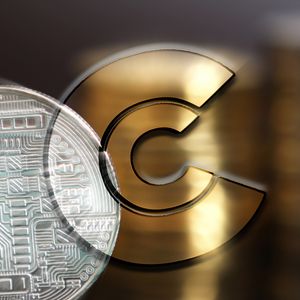BitcoinWorld Stablecoins Soar: Unprecedented Google Searches Signal a New Era for Digital Finance In a fascinating turn of events that underscores the rapidly evolving landscape of digital finance, Google searches for stablecoins have reached an unprecedented all-time high. This surge in interest isn’t just a fleeting trend; it’s a direct response to significant regulatory milestones, particularly the passage of the GENIUS Act. This groundbreaking law, recently signed by U.S. President Donald Trump, provides a much-anticipated regulatory pathway for foreign stablecoin issuers to operate within the United States, signaling a new chapter for these crucial digital assets. What Exactly Are Stablecoins, and Why Do They Matter Now? Before diving deeper into the implications of this surge, let’s briefly clarify what stablecoins are. Unlike volatile cryptocurrencies such as Bitcoin or Ethereum, stablecoins are designed to maintain a stable value, typically pegged to a fiat currency like the U.S. dollar, or to commodities like gold. This stability is achieved through various mechanisms, including: Fiat-backed: The most common type, where each digital coin is backed by an equivalent amount of fiat currency held in reserve. Crypto-backed: Overcollateralized by other cryptocurrencies, often with complex liquidation mechanisms to maintain stability. Algorithmic: Rely on algorithms and smart contracts to manage supply and demand, without direct collateral. Their inherent stability makes stablecoins a vital bridge between the traditional financial system and the burgeoning world of decentralized finance (DeFi), offering the best of both worlds: the efficiency of blockchain technology combined with the predictability of traditional currencies. The GENIUS Act: A Game Changer for Global Stablecoins? The passage of the GENIUS Act (Global Exchange Network for International Unified Stablecoins) is undoubtedly the primary catalyst behind the recent explosion in stablecoin interest. This legislation is pivotal because it addresses a long-standing challenge for the crypto industry: regulatory uncertainty. By establishing a clear framework for foreign stablecoin issuers, the U.S. has signaled its intent to embrace, rather than stifle, innovation in this space. According to Cointelegraph, this regulatory clarity is fostering an environment ripe for growth. The act aims to: Legitimize Operations: Provide a clear legal and operational framework for international issuers. Boost Confidence: Increase investor and institutional confidence in the stability and security of stablecoins . Promote Competition: Encourage more diverse stablecoin offerings and innovations in the U.S. market. This legislative move is a significant step towards mainstream adoption, transforming stablecoins from a niche crypto asset into a potentially foundational element of global financial infrastructure. Why the Explosive Surge in Stablecoin Interest? Beyond the GENIUS Act, several interconnected factors are fueling the unprecedented demand for stablecoins : 1. Regulatory Approval and Clarity As mentioned, the GENIUS Act’s approval has removed a major hurdle for many businesses and investors. Regulatory certainty reduces risk and makes it easier for institutions to engage with digital assets. This clarity allows for greater investment and integration into existing financial systems, making stablecoins a more attractive option. 2. Surge in Stablecoin Issuance and Supply With clearer regulations, there’s been a noticeable increase in the issuance and overall supply of stablecoins . More supply often indicates growing demand and a healthier, more liquid market. This expansion makes stablecoins more accessible and usable for a wider range of applications. 3. Growing Momentum Among Institutions Beyond just using existing stablecoins , institutions are increasingly looking to issue their own. This trend signifies a deeper integration of blockchain technology into traditional finance. Large financial players see the benefits of digital assets for internal processes, cross-border settlements, and even new product offerings, further legitimizing the role of stablecoins . 4. Stablecoins as a Crucial Hedging Tool Nassar Al Achkar, Chief Strategy Officer (CSO) at cryptocurrency exchange CoinW, highlights a critical use case: stablecoins are gaining significant traction as a hedging tool against the notorious volatility of the broader crypto market. When Bitcoin or Ethereum experience sharp price swings, investors often convert their holdings into stablecoins to preserve capital without exiting the crypto ecosystem entirely. This allows them to quickly re-enter the market when conditions are more favorable, making stablecoins an indispensable risk management tool. 5. High Utility in Cross-Border Payments The CoinW CSO also emphasized the growing demand for stablecoins due to their high utility in cross-border payments. Traditional international transfers can be slow, expensive, and opaque. Stablecoins , leveraging blockchain technology, offer a faster, cheaper, and more transparent alternative. This efficiency is particularly attractive for businesses engaged in international trade and remittances, bypassing legacy banking systems and reducing transaction costs significantly. 6. A Safe Haven in Market Uncertainty In times of broader market uncertainty, not just within crypto but globally, stablecoins are increasingly viewed as a safe haven. Similar to how investors might flock to gold or U.S. Treasury bonds during economic turmoil, the stability of stablecoins provides a digital anchor. This functionality offers peace of mind to investors looking for a secure place to park their digital assets during periods of heightened risk or macroeconomic instability. The Broader Impact: Beyond Hedging and Payments The rise of stablecoins extends far beyond their immediate utility in hedging and payments. They are foundational to the growth of the DeFi ecosystem, enabling lending, borrowing, and trading without the need for traditional banks. They also facilitate the tokenization of real-world assets and could pave the way for central bank digital currencies (CBDCs), influencing the future of money itself. The increased regulatory clarity, coupled with their inherent benefits, positions stablecoins as a cornerstone for the next generation of financial innovation. As institutions continue to explore their potential and user adoption grows, we can expect to see stablecoins play an even more prominent role in both digital and traditional economies. Challenges and the Road Ahead for Stablecoins While the future for stablecoins appears bright, it’s essential to acknowledge potential challenges. These include: Regulatory Fragmentation: While the GENIUS Act is a step forward, global regulatory frameworks for stablecoins are still evolving and vary widely by jurisdiction, creating complexities for international operations. Centralization Concerns: Many fiat-backed stablecoins rely on centralized entities to hold reserves, raising questions about transparency, auditability, and potential points of failure. De-pegging Risk: Although designed for stability, events like the TerraUSD (UST) collapse demonstrated that even algorithmic stablecoins can de-peg, leading to significant losses and shaking market confidence. Interoperability: Ensuring seamless interaction between different stablecoins and various blockchain networks remains an ongoing technical challenge. Addressing these challenges will be crucial for the sustained growth and widespread adoption of stablecoins . Summary: A New Horizon for Stablecoins The surge in Google searches for stablecoins is a clear indicator of their growing importance in the global financial landscape. Driven by the landmark GENIUS Act, which provides vital regulatory clarity, coupled with their proven utility as a hedging tool, an efficient cross-border payment solution, and a safe haven asset, stablecoins are no longer just a niche crypto asset. They are rapidly becoming an integral part of both the digital economy and traditional finance, promising a future where digital transactions are faster, cheaper, and more accessible than ever before. As the regulatory environment matures and technological innovations continue, the role of stablecoins is set to expand dramatically, ushering in a truly new era for digital finance. Frequently Asked Questions (FAQs) About Stablecoins Q1: What is the GENIUS Act, and how does it affect stablecoins? A1: The GENIUS Act (Global Exchange Network for International Unified Stablecoins) is a U.S. law signed by President Donald Trump that provides a regulatory pathway for foreign stablecoin issuers to operate in the U.S. It brings much-needed clarity and legitimacy, encouraging more widespread adoption and innovation in the stablecoin market. Q2: Why are stablecoins considered a ‘safe haven’ in the crypto market? A2: Stablecoins are pegged to stable assets like the U.S. dollar, meaning their value remains relatively constant. During periods of high volatility in cryptocurrencies like Bitcoin, investors often convert their holdings into stablecoins to protect their capital from price fluctuations, making them a ‘safe haven’ within the crypto ecosystem. Q3: How do stablecoins improve cross-border payments? A3: Stablecoins facilitate faster, cheaper, and more transparent international transactions compared to traditional banking methods. By leveraging blockchain technology, they bypass intermediaries, reduce fees, and significantly cut down settlement times, making global remittances and business payments more efficient. Q4: Are all stablecoins the same? A4: No, stablecoins differ in their underlying mechanisms. The most common types are fiat-backed (e.g., USDT, USDC), which hold reserves of traditional currency; crypto-backed (e.g., DAI), which are collateralized by other cryptocurrencies; and algorithmic (e.g., the defunct UST), which rely on software algorithms to maintain their peg. Each type carries different risk profiles and operational models. Q5: What are the main risks associated with stablecoins? A5: Key risks include regulatory uncertainty across different jurisdictions, concerns about the centralization of fiat-backed stablecoins and the transparency of their reserves, and the potential for ‘de-pegging’ (losing their stable value) as demonstrated by past events, particularly with algorithmic stablecoins . Q6: How will institutional adoption impact the future of stablecoins? A6: Institutional adoption is crucial for the mainstream success of stablecoins . As more financial institutions, corporations, and even governments explore issuing their own stablecoins or integrating existing ones, it will enhance liquidity, foster trust, and accelerate their use in a wider range of financial services, potentially revolutionizing global finance. Did you find this article insightful? Share it with your friends and colleagues on social media to spread awareness about the exciting developments in the world of stablecoins and digital finance! To learn more about the latest crypto market trends, explore our article on key developments shaping stablecoins institutional adoption. This post Stablecoins Soar: Unprecedented Google Searches Signal a New Era for Digital Finance first appeared on BitcoinWorld and is written by Editorial Team
















